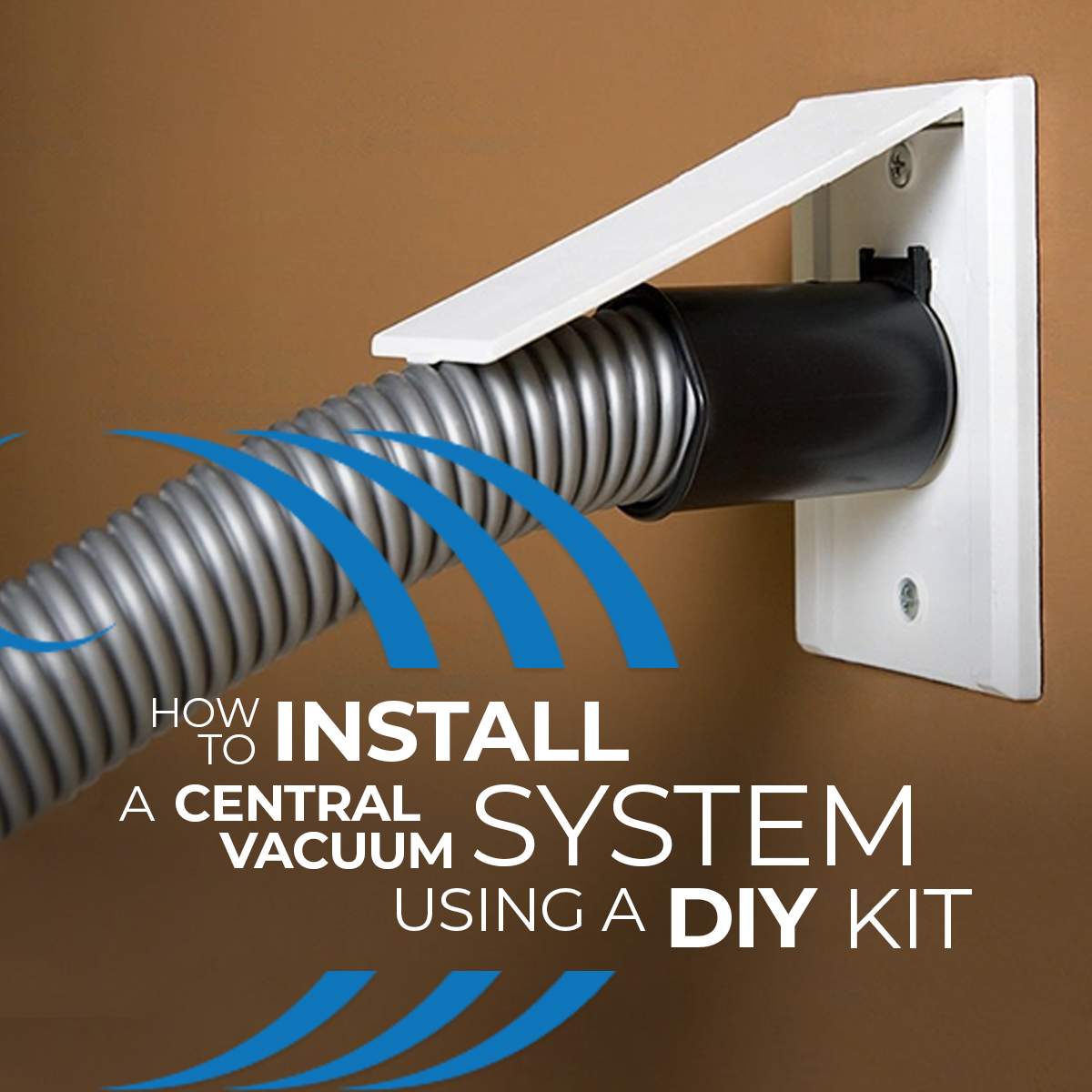
Boosting Productivity in Office Buildings with Central Vacuum
In today’s fast-paced work environment, maintaining a clean and organized office space is crucial for productivity. Office buildings often struggle with keeping their premises clean

A DIY central vacuum system installation is a simple project that can be done in less than a day.
In this guide, you will learn how to install a central vacuum system using a DIY kit, whether it’s in a new construction or an existing home.
First, you need to know about the main components of a central vacuum system.
All of the pipes that will be installed in your home will connect the outlets to the power unit, which will suction the dirt and debris that flows through the pipes.
Attached to the unit is a bag and a collection container where dirt is accumulated. It also has a muffler that effectively reduces noise while the unit is running.
We have three different types of power units that you can choose from based on the size of your home.
These pipes are specially designed to work with central vacuum systems, so compromising with other kinds of pipes might not be a good idea.
They serve as the passageway of dirt and debris, traveling from the hose to the collection container.
Depending on your electric system, high and low voltage wiring is installed together with the piping.
This is the most important component of a central vacuum system. It is where you plug in your cleaning hose to switch on the power unit.
Inlets are usually installed in walls, but they can also be located on floors.
An Air kit consists of a cleaning hose and a variety of vacuum accessories. These are all you need when you’re cleaning with your central vacuum.
Depending on your floor type, your air kit can include a wide selection of accessories, including an electric powerhead.
Now that you know about the components of your central vacuum system, here’s how to install them in your home.
The first thing that you should do is to plan the location for the vacuum inlets.
The inlets should be strategically placed in your home. This is to avoid difficulties with the installation and prevent air leaks from happening in the pipes, as they can affect the system’s suction and overall efficiency.
Inlet valves are commonly installed in wall cavities, but they can also be installed in floors as long as they have metal covers. Make sure that the inlet locations will allow the cleaning hose to reach every corner of the house. It’s best to keep the number of inlets to a bare minimum.
For single-story houses, the PVC vacuum pipeline can run horizontally through a crawl space, basement or an attic and branch out in a short distance through interior walls or floors to connect with the inlets.
The same methods can be used in two-story homes. However, the installation can get tricky in two-story houses, so it’s better to get a technician who can do it right.
Next, install the power unit in the garage, basement, storage or utility room. We highly recommend installing the unit in the basement or lowest level of your home to avoid working against gravity. Dust and solids will fall more easily than if they were pulled downwards.
Also, avoid placing the unit in heated places as the motor needs good ventilation in order to last long and operate smoothly.
If you want an exhaust vent for your central vacuum, mount the power unit on an exterior wall.
Make sure the power unit is close to an outlet that provides sufficient power to run the system.
If you need more information on how to correctly install a power unit, contact your local dealer or check your central vacuum’s manual.
The difficulty of this procedure will depend on what type of home you have and whether it’s being constructed or already built.
It’s always easier to install pipes or inlets during the construction process.
For existing homes, inlet valves are easier to retrofit when they are installed in the floor. However, for two-story homes, the piping that connects to floor valves can be visible throughout the house. So to hide the pipes, you can take advantage of your closet or cabinets.
If you have an existing home, having access to a crawl space or an attic makes things easier for the installation.
Though installing the pipes should be relatively easy, you might find it a challenge to drill and cut holes through studs and framework.
Starting from the outlets, each wire should be connected to another wire that goes all the way back to the power unit. To do this, strip the wires and join them by twisting their ends together.
Connect wires of the same color to make sure the polarity is right. Close the connections with wire nuts and you can secure the wires to the pipes by using electrical tape, cable ties or clamps made from excess piping.
To make sure that your new central vacuum system will work properly, run a test with all the inlets closed. There should be very little or no air flowing out of the power unit’s exhaust pipeline.
You should also walk around your house while the system is running. If you hear a whistling sound, that means you forgot to glue a pipe connection.

In today’s fast-paced work environment, maintaining a clean and organized office space is crucial for productivity. Office buildings often struggle with keeping their premises clean

Central vacuums in animal shelters & vet clinic: Explore how these systems boost hygiene, efficiency, and air quality.

In the world of home entertainment, a home theater is a luxury that many homeowners dream of. It’s an immersive experience that brings the magic

A central vacuum system is a significant investment that promises convenience, powerful suction, and improved indoor air quality. However, choosing the right central vacuum hose
Our home automation products are at the forefront of technology, offering a blend of convenience, security, and efficiency. As a Homewave dealer, you’ll be part of a network transforming homes into smart, futuristic spaces.
Embark on this rewarding journey with us and leverage the power of innovative technology.
Please fill out this form and become a Homewave Dealer.